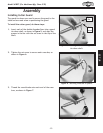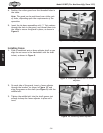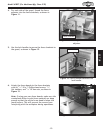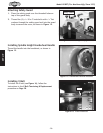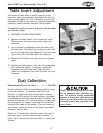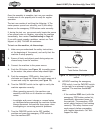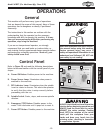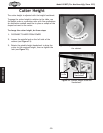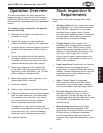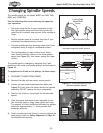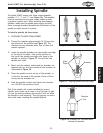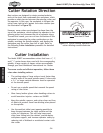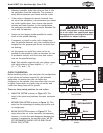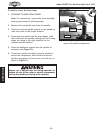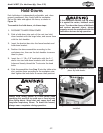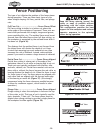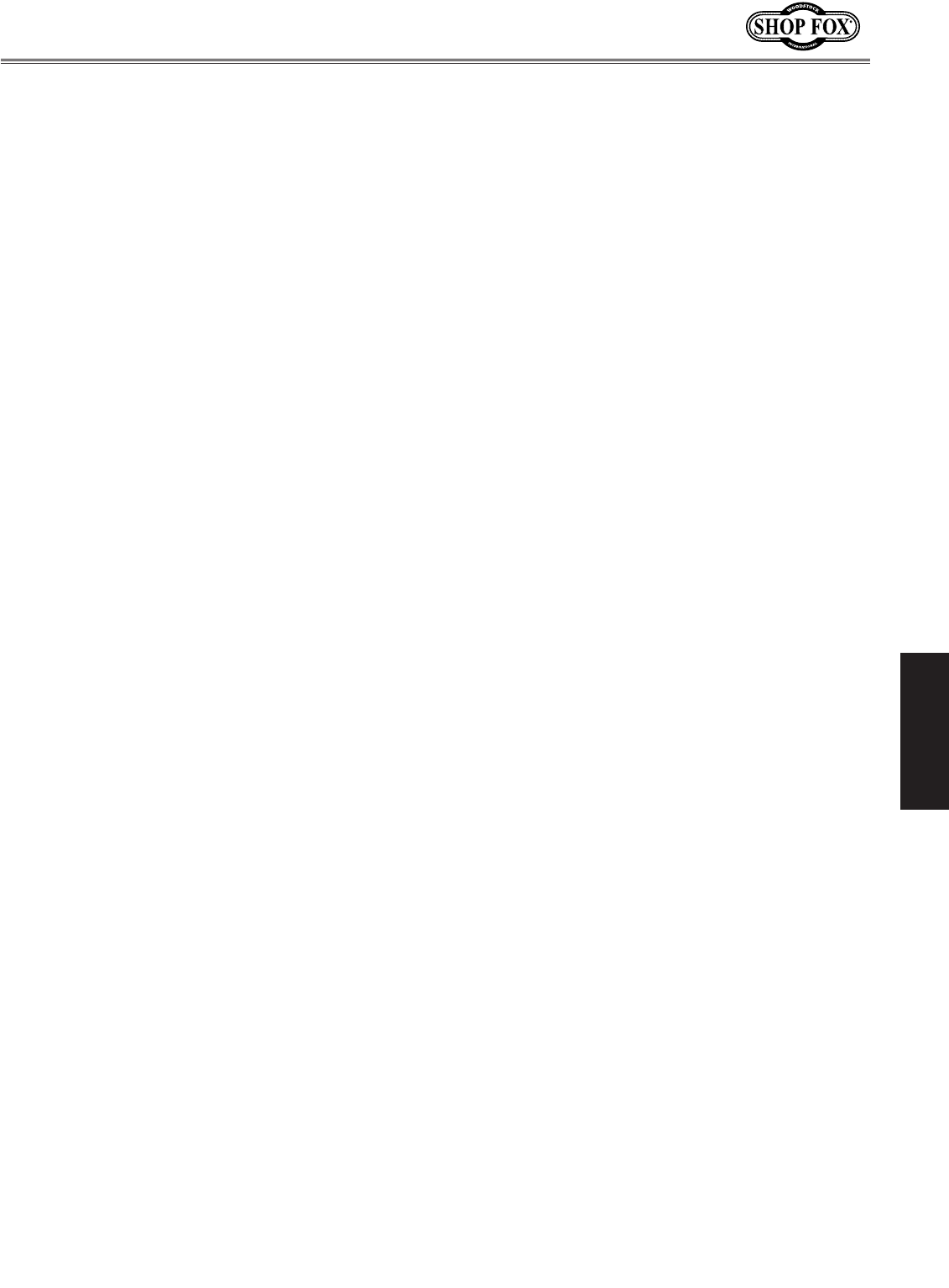
-21-
Df[\cN(/).=fiDXZ_`e\jD]^%J`eZ\*&()
FG<I8K@FEJ
This overview explains the basic process that
happens during an operation with this machine.
Familiarize yourself with this process to better
understand the remaining parts of the Fg\iXk`fe
section.
KfZfdgc\k\Xkpg`ZXcfg\iXk`fe#k_\fg\iXkfi
[f\jk_\]fccfn`e^1
(% Examines the workpiece to make sure it is
suitable for cutting.
)% Installs the cutter onto the spindle and
adjusts the spindle height for the operation.
*% Correctly adjusts the safety guard and fence
boards for the operation and locks them in
place.
+% Checks the outfeed side of the machine
for proper support and to make sure the
workpiece can safely move past the cutter
without interference from other objects.
,% Places the workpiece on the infeed side
of the table and firmly against the fence,
stabilizing it with hold-downs, jigs, or other
safety workpiece holding devices.
-% Wears safety glasses and a respirator, and
locates push sticks if needed.
.% Starts the machine.
/% Verifies cutter rotation and feed directions.
0% Holds the workpiece firmly and flatly against
both the table and fence, and then pushes
the workpiece past the cutter at a steady
and controlled rate until the workpiece
moves completely beyond the cutter.
The operator is very careful to keep the
workpiece firmly against the table and fence
during the entire cut, while also keeping
hands well away from the spinning cutter.
('% Stops the machine.
Fg\iXk`feFm\im`\n
Follow these rules when choosing and cutting
stock:
Nfibg`\Z\DXk\i`Xc1 Your shaper and cutters
are designed to cut wood and wood products
ONLY! DO NOT attempt to cut man-made
materials (such as glass, metal, plastics,
etc.) that may cause the cutter or workpiece
to break apart, which could cause serious
personal injury or property damage.
=fi\`^eFYa\Zkj1 Nails, staples, dirt,
rocks and other foreign objects are often
embedded in wood. While cutting, these
objects can become dislodged and hit the
operator, cause kickback, and break or chip
the cutter, which might then fly apart.
Always visually inspect your workpiece for
these items. If they cannot be removed, do
NOT cut the workpiece.
CXi^\&Cffj\Befkj1 Loose knots can become
dislodged during the shaping operation.
Large knots can cause kickback and machine
damage. Choose workpieces that do not have
large/loose knots or plan ahead to avoid
cutting through them.
N\kfi>i\\eJkfZb1 Cutting wood
with a moisture content over 20% causes
unnecessary wear on the cutter, increases
the risk of kickback, and yields poor results.
<oZ\jj`m\NXig`e^1 Workpieces with
excessive cupping, bowing, or twisting
are dangerous to shape because they are
unstable and often unpredictable when being
cut. DO NOT use workpieces with these
characteristics!
D`efiNXig`e^1 Workpieces with slight
cupping can be safely supported if the
cupped side is facing the table or the fence.
On the contrary, a workpiece supported
on the bowed side could rock during the
operation and could cause kickback or severe
injury.
JkfZb@ejg\Zk`fe
I\hl`i\d\ekj



